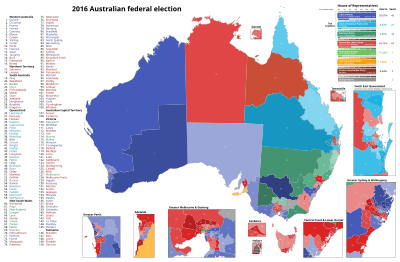| |||||||||||||||||||||||||||||||||||||||||||||||||||||||||||||||||||||||||||||||||||||||||||||||||||||||||||||
All 150 seats in the House of Representatives 76 seats were needed for a majority All 76 seats in the Senate | |||||||||||||||||||||||||||||||||||||||||||||||||||||||||||||||||||||||||||||||||||||||||||||||||||||||||||||
|---|---|---|---|---|---|---|---|---|---|---|---|---|---|---|---|---|---|---|---|---|---|---|---|---|---|---|---|---|---|---|---|---|---|---|---|---|---|---|---|---|---|---|---|---|---|---|---|---|---|---|---|---|---|---|---|---|---|---|---|---|---|---|---|---|---|---|---|---|---|---|---|---|---|---|---|---|---|---|---|---|---|---|---|---|---|---|---|---|---|---|---|---|---|---|---|---|---|---|---|---|---|---|---|---|---|---|---|---|---|
| Opinion polls | |||||||||||||||||||||||||||||||||||||||||||||||||||||||||||||||||||||||||||||||||||||||||||||||||||||||||||||
| Registered | 15,671,551 | ||||||||||||||||||||||||||||||||||||||||||||||||||||||||||||||||||||||||||||||||||||||||||||||||||||||||||||
| Turnout | 14,262,016 (91.01%) ( | ||||||||||||||||||||||||||||||||||||||||||||||||||||||||||||||||||||||||||||||||||||||||||||||||||||||||||||
| |||||||||||||||||||||||||||||||||||||||||||||||||||||||||||||||||||||||||||||||||||||||||||||||||||||||||||||
 Results by division for the House of Representatives, shaded by winning party's margin of victory. | |||||||||||||||||||||||||||||||||||||||||||||||||||||||||||||||||||||||||||||||||||||||||||||||||||||||||||||
| |||||||||||||||||||||||||||||||||||||||||||||||||||||||||||||||||||||||||||||||||||||||||||||||||||||||||||||
2016 Australian federal election |
|---|
|
| National results |
| State and territory results |
|
|
The 2016 Australian federal election was a double dissolution election held on Saturday 2 July to elect all 226 members of the 45th Parliament of Australia, after an extended eight-week official campaign period. It was the first double dissolution election since the 1987 election and the first under a new voting system for the Senate that replaced group voting tickets with optional preferential voting.[1]
In the 150-seat House of Representatives, the one-term incumbent Coalition government was reelected with a reduced 76 seats, marking the first time since 2004 that a government had been reelected with an absolute majority. Labor picked up a significant number of previously government-held seats for a total of 69 seats, recovering much of what it had lost in its severe defeat of 2013. On the crossbench, the Greens, the Nick Xenophon Team, Katter's Australian Party, and independents Wilkie and McGowan won a seat each. For the first time since federation, a party managed to form government without winning a plurality of seats in the two most populous states, New South Wales and Victoria.[2] One re-count was held by the Australian Electoral Commission (AEC) for the Division of Herbert, confirming that Labor won the seat by 37 votes.[3][4][5][6][7]
The final outcome in the 76-seat Senate took over four weeks to complete. Announced on 4 August, the results revealed a reduced plurality of 30 seats for the Coalition, 26 for Labor, and a record 20 for crossbenchers including 9 Greens, 4 from One Nation and 3 from the Xenophon Team. Former broadcaster and Justice Party founder Derryn Hinch won a seat, while Jacqui Lambie, Liberal Democrat David Leyonhjelm and Family First's Bob Day retained theirs. The Coalition will require nine additional votes for a Senate majority, an increase of three.[8][9][10] Both major parties agreed to allocate six-year terms to the first six senators elected in each state, while the last six would serve three-year terms.[11] Labor and the Coalition each gained a six-year Senator at the expense of Hinch and the Greens,[12][13][14] who criticised the major parties for rejecting the "recount" method despite supporting it in two bipartisan senate resolutions in 1998 and 2010.[15][16][17]
A number of initially-elected senators were declared ineligible a result of the 2017–18 Australian parliamentary eligibility crisis, and replaced after recounts.
As of 2023 this is the most recent federal election for the major parties to have new leaders when Shorten replaced Kevin Rudd after the 2013 Australian federal election, loss for the latter, as Labor leader after beating Anthony Albanese in the October 2013 Australian Labor Party leadership election a month later, and Turnbull replaced Tony Abbott as Liberal leader and prime minister on 14 September 2015 after a leadership challenge win in the September 2015 Liberal Party of Australia leadership spill ten months prior.
- ^ Nicole Hasham (3 July 2016). "Election 2016 results: Senate count throws up a wild mix as One Nation, Fred Nile, Liberal Democrats vie for seats". news.com.au. Archived from the original on 5 July 2016. Retrieved 3 July 2016.
- ^ Australian Politics and Elections Database: University of Western Australia Archived 18 January 2015 at the Wayback Machine
- ^ "Statement from the Australian Electoral Commission: Recount in the Division of Herbert" (Press release). Australian Electoral Commission. 19 July 2016. Archived from the original on 24 July 2016. Retrieved 25 July 2016.
- ^ "Federal Election 2016 Results". Australia Votes. Australian Broadcasting Corporation. 3 July 2016. Archived from the original on 4 July 2016. Retrieved 3 July 2016.
- ^ "Labor wins seat of Herbert after recount". Abc.net.au. 31 July 2016. Archived from the original on 14 August 2016. Retrieved 11 August 2016.
- ^ Federal Politics (31 July 2016). "Labor takes seat of Herbert, leaving Malcolm Turnbull with majority of just one seat". Smh.com.au. Archived from the original on 15 August 2016. Retrieved 11 August 2016.
- ^ Australian Electoral Commission. "Herbert - 2016 election". Vtr.aec.gov.au. Archived from the original on 20 September 2016. Retrieved 11 August 2016.
- ^ "AEC". Twitter. Archived from the original on 6 August 2016. Retrieved 11 August 2016.
- ^ "Senate Results - Australia Votes | Federal Election 2016 (Australian Broadcasting Corporation)". ABC News. Archived from the original on 8 July 2016. Retrieved 8 July 2016.
- ^ "Senate photo finishes". Blogs.crikey.com.au. 12 July 2016. Archived from the original on 13 July 2016. Retrieved 30 July 2016.
- ^ Green, Antony. "How Long and Short Senate Terms are Allocated After a Double Dissolution". Antony Green's Election Blog. Australian Broadcasting Corporation. Archived from the original on 22 September 2016. Retrieved 21 September 2016.
- ^ Coalition and Labor team up to clear out crossbench senators in 2019: SMH 12 August 2016 Archived 6 November 2016 at the Wayback Machine
- ^ Senate terms: Derryn Hinch and Greens' Lee Rhiannon given three years - The Guardian 12 August 2016 Archived 27 February 2017 at the Wayback Machine
- ^ "ALP-LNP deal to force senators back to poll in three years". Theaustralian.com.au. 13 August 2016. Retrieved 19 March 2018.
- ^ "Chapter 4 - Elections for the Senate". Odgers' Australian Senate Practice Thirteenth Edition. Parliament of Australia. Archived from the original on 12 September 2016. Retrieved 21 September 2016.
- ^ Coalition flags first elected Senate plan: Sky News 12 August 2016 Archived 13 August 2016 at the Wayback Machine
- ^ "Cormann raises 'first elected' plan to halve Senate terms for crossbenchers". Theaustralian.com.au. 12 December 2016. Retrieved 19 March 2018.




